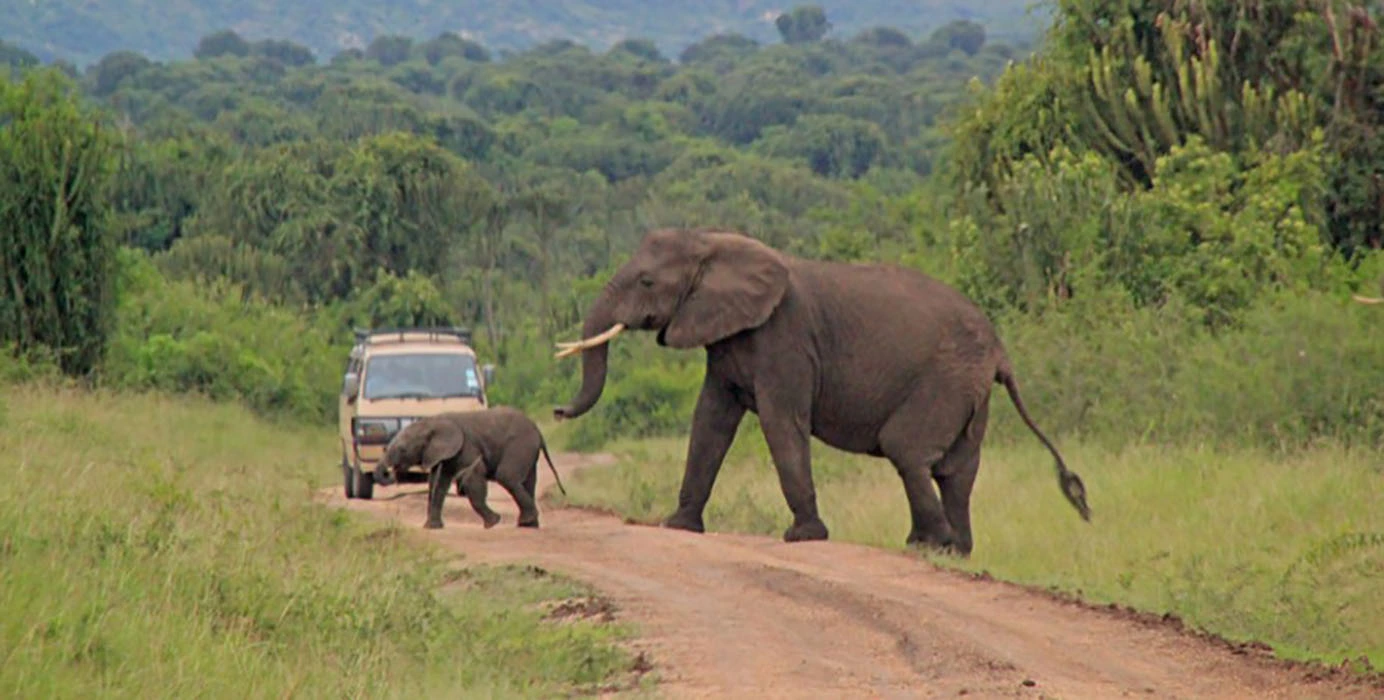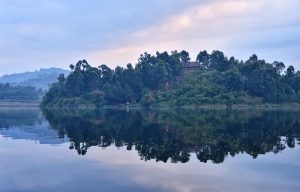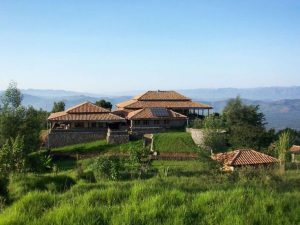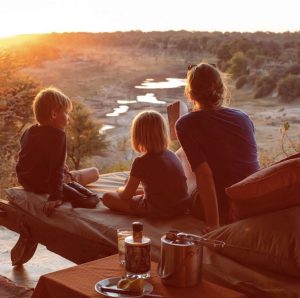What to see and do in Queen Elizabeth National Park
The most visited national park in Uganda is Queen Elizabeth National Park, which is situated in the country’s west. Queen’s distinctive mix of grasslands, woodlands, and waterscapes attracts adventurers. What to see and do in Queen Elizabeth National Park. The largest biodiverse park in Uganda, Queen Elizabeth National Park spans 1,978 km² and is home to a wide variety of species.
The most well-known savanna park in Uganda is Queen Elizabeth National Park. Which is also the greatest location to see lions, especially tree-climbing lions. Making it the ideal location for a Uganda wildlife safari. Lakes, savannah grasslands, woods, and wetlands are among its many diverse habitats, which are home to the widest range of large mammals in the nation. What to see and do in Queen Elizabeth National Park
What are the top ten tourist attractions in Queen Elizabeth National Park?
Visit the Kazinga Channel
The freshwater Kazinga Channel, which connects Lake Edward to its smaller neighbor, Lake George, is 32 kilometers long. Both King George V and King Edward VII, the son of Queen Victoria, are honored by the names of the lakes.
An important aspect of Queen Elizabeth National Park and a well-liked destination for wildlife tourists is the broad channel.
The channel is home to a diverse array of animals and birds, including many Nile crocodiles and one of the highest concentrations of hippos [about 2,000] in the world.
In Queen Elizabeth National Park, chimpanzee trekking
The Kyambura Gorge, home to several habituated chimpanzees. Is the ideal location for chimpanzee tracking and hiking in Queen Elizabeth National Park. One of Uganda’s most notable national parks for its exceptional wildlife and birdlife. The gorge’s landscape is breathtaking, and when you begin your chimpanzee trekking adventure in the morning. You can view a variety of different creatures as well as birds.
You can combine this inexpensive chimpanzee tracking excursion in the Kyambura Gorge with any other Uganda Safari activity in Queen Elizabeth to have a comprehensive experience of this amazing national park.
The Ugandan Queen Elizabeth National Park’s tree-climbing lions
Can Lions Scale Trees? In fact, lions are not very likely to climb trees. There are just two populations of these lions in the entire world that climb trees as part of their daily routine. The Ishasha sector, located in the southern region of Uganda’s renowned Queen Elizabeth National Park, is home to one of these groups. The southern Tanzanian region’s Lake Manyara National Park is home to the other population.
Game Drives
Visitors can drive through the park and observe the animals as part of this activity. There are numerous locations with well-kept game viewing trails in the park.
There are more than 200 kilometers of well-maintained game trails in this Ugandan tourist park. Elephants, buffaloes, lions, and a variety of antelopes are among the animals that can be seen on safari in Uganda. And game drives are most effective in the morning.
Bird Watching
With more than 550 different species of birds. Queen Elizabeth National Park is a popular destination for those who like bird watching. The park, which spans 1,978 square kilometers, is located in the Rukungiri district in southwest Uganda. Its elevation ranges from 900 meters on the nearby Lake Edward to 1,845 meters at the summit of the eastern escarpment of the western Rift Valley. Its habitat consists of riparian forest, wet semi-deciduous woodland, ravine bushland, and moist thicket at an average elevation. This national park offers a variety of bird habitats, including lakes, rivers, open grasslands, open forests, and both seasonal and permanent swamps.
Nature Walks in the Forest of Maramagambo
Maramagambo Forest is a popular destination, particularly for birdwatchers. In order to learn about forest conservation and to observe small crater lakes, birds, primates, and other forest critters, nature walks are arranged in this expansive forest along well-established pathways. Queen Elizabeth National Park’s Nature Walks Speaking of primates, the Maramagambo forest is home to roughly nine different species, including chimpanzees, bush babies, red-tailed monkeys, L’Hoest’s monkeys, vervet monkeys, and baboons.
Exploring the Salt Mines near Lake Katwe
One of the few salt lakes in East Africa is Lake Katwe. Due to the excessive salinity, there is no wildlife in the lake. In spite of this, the lake’s environs are bustling with activity. Particularly during the dry season when villages congregate to extract salt from the milky waters. In Katwe, salt mining has been practiced for generations. Prior to the discovery of alternative sources and mining techniques, salt mining was extremely profitable. Lake Katwe is the source of the majority of the salt used in Ugandan houses. Despite the risks associated with the poisonous salt waters, salt is nevertheless routinely mined by hand.
Rides on Hot Air Balloons
Murchison Falls National Park is the source of the new hot air balloon safaris. The program begins with a briefing at the park’s Kasenyi gate extremely early in the morning. The ride offers incredible overhead views of the entire park’s animals as well as fantastic chances to capture gorgeous pictures of the lovely park.
Cultural Journeys
A vacation to Uganda, and Africa in general, would not be complete without a visit to one of the native tribes. An opportunity to visit the Kikorongo Equator Cultural group to observe and take part in traditional dances, theater. And fire-making can be arranged while on a safari in Queen Elizabeth National Park. The Kikorongo Equator Cultural group offers tourists the opportunity to learn how to create indigenous crafts and art, such as weaving baskets out of natural fibers. You can purchase a lot of these artifacts for fair prices. Once visitors have seen the group, the leaders can show them around to individual families to discover how they cook, tend to their gardens, create household goods, and construct grass thatched homes.
Where to stay in Queen Elizabeth National Park
There are plenty of lodging options in Queen Elizabeth National Park. Ranging from luxurious to the most reasonably priced, and all of them offer standard amenities. These include Ishasha Safari Camp, Kasenyi Safari Lodge, Jacana Lodge, Mweya Safari Lodge, Mweya Hostels, and Elephant Lodge, to name a few.




